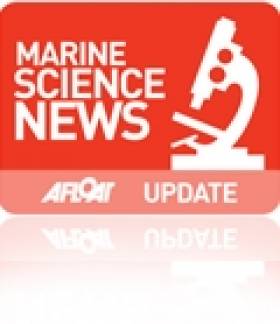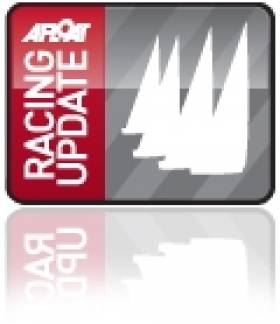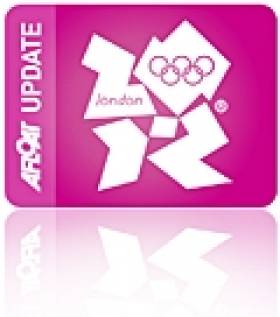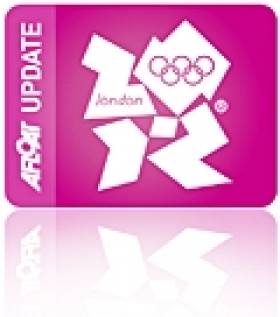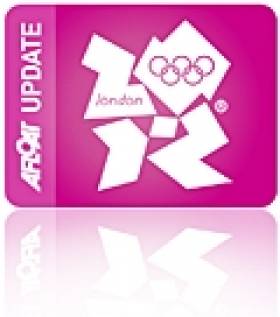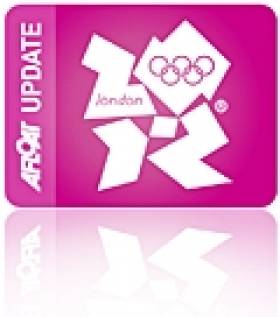Displaying items by tag: Star
An exotic weekend in Dun Laoghaire with the start of an Olympic class keelboat event plus the arrival of a Volvo 70 into the harbour but Irish weather meant all did not go to plan. Click our links for a round up of the weekend's sailing events from around the country: Mansfield Wins 1720 Euros in Baltimore, Squall Puts Paid to First Race of Star Europeans in Dun Laoghaire, West Kirby Teams Top ISAF Worlds in Schull, Johnston's Beneteau 31.7 is Good Prospect, Killyleagh Pair Scoop Flying Fifteen East Coast Cup, Lively Lady Sails to Victory in Fickle ISORA Race to Rockabill, SB3 Team Sanya Welcome Scuppered by Strong Winds. We'll have more reports later this morning from the J24 Easterns in Howth, the National 18 season in Cork and J80 Match racing.
Squall Puts Paid to First Race of Star Europeans in Dun Laoghaire
Howth Race Officer David Lovegrove opted to send the 27-boat fleet back ashore ahead of the gale that was followed by torrential rain and squalls, a decision, say Royal St. George YC organsiers, that met with the approval of competitors from 17 nations.

Dun Laoghaire's Max Treacy and Anthony Shanks before racing was cancelled yesterday. Photo: Gareth Craig.
By 4pm though the gales and rain had dsisappered and sunny ideal 10-knot conditions returned to Dun Laoghaire, unfortunately just too late for the Stars to resume racing.
Fresh to strong conditions are expected to continue for the early part of the week. Two races are scheduled for tomorrow, starting at 11.30am.
Greath Craig's pics are below and more on the Afloat gallery here.
O'Leary and Burrows Face Home Waters Test
Olympic keelboat duo Peter O'Leary and David Burrows face one of the sternest tests of the summer season but this time its on waters st least.
All 32 boats for the Star European Championship (2nd-10th September) have arrived in Dun Laoghaire and are busy training on Dublin Bay prior to Sunday's first race. Current world champions and double Olympic Gold medallists Iain Percy (GBR) with Andrew Simpson top the entry list while defending title-holders Johannes Polgar (GER) with Markus Koy are also competing.
Beijing 2008 helm O'Leary along with Olympian Burrows, (who crewed a Star at the Atlanta Olympics in 1996) will be in the hunt for a top three place on home waters while Max Treacy and Anthony Shanks will be competing from their home club for the first Star class event in Ireland.
Percy will be seeking to improve on his second place at the recent London Olympic 2012 test-event at Weymouth while the championship will also be an indicator of form before the ISAF Sailing World Championships at Perth in December.
"This fleet is certainly an example of quality rather than quantity," commented Martin Byrne, Commodore of the Royal St. George YC, organising host club. "Looking at the entry-list, a large number of boats could form a typical world top ten and are capable of winning this championship. We expect Dublin Bay will live up to its reputation as a great racing area and deliver good conditions for the seven races."
Five Star world champions or Olympic medallists are included in the line-up while several more are also former champions in other Olympic classes. Polgar and Koy won last year's championship in Viareggio (Italy) in a record turn-out for the Star class. Second-placed runner-up Andrew Campbell (USA) from 2010 is also in Dun Laoghaire, this time with Ian Coleman and are up against 2009 world champion George Szabo (USA) with Mark Strube in the lead-up to selection for next year's Olympics.
Tornado class Gold medallist Fernando Echavarri (ESP) with Fernando Rodriguez Rivero will be competing along with double world champion and Olympic bronze medallist Xavier Rohart (FRA) and Pierre Alexis Ponsot. Former Finn Gold medallist and 2008 world champions Mateusz Kusznierewicz (POL) and Dominik Zycki are also certain contenders next week.
Pulsars Discoveries by NUI Galway Astronomers
The team, led by NUI Galway's Dr Andy Shearer, compared optical observations with a detailed model of the structure of the pulsar. From this, using their inverse mapping or reverse engineering approach, they were able to establish for the first time that most of the light from the pulsar comes from close to the star's surface. This is contrary to most pulsar models and points to a new way of analysing observational data from pulsars.

Dr Shearer said: "This is the culmination of ten years work. Our success is based upon having some talented post-graduate students and post-doctoral researchers combined with looking at the problem in a different way. The result shows the importance of our approach of combining numerical models run on large supercomputers with detailed observations. To follow these calculations we will use the SFI funded Galway Astronomical Stokes Polarimeter (GASP)* to finally establish the conditions around a pulsar and solve a forty year old problem - how do pulsars work?"
In another development, NUI Galway astronomers, working with colleagues in Italy, the UK and US, have discovered an X-ray bright tail coming from a pulsar. The tail was discovered by combining optical observations taken with the European Southern Observatory's Very Large Telescope and NASA's Chandra X-Ray observatory. The pulsar, known as PSR J0357, is about half a million years old and is located 1,600 light years from Earth with a tail of over four light years across. These findings have been recently published in The Astrophysical Journal.
Despite over forty years of observation and theory, pulsars, which are rapidly rotating neutron stars, have defied an explanation of how they work. Pulsars are about one and a half times the mass of the sun, but are so small they could fit into Galway Bay. Consequently they represent extreme matter. They have a magnetic field which can be greater than a million billion times stronger than the Earth's magnetic field. Their density is also about a million, billion times greater than the density of the Earth. They are formed during a massive explosion at the end of a star's life known as a Type II supernova. During a supernova, the light from a single star outshines its host galaxy which contains up to a hundred billion stars.
The work at NUI Galway involved observations of the Crab pulsar formed in April 1054 when it was observed as a daytime star – unusually, very few observations of this event come from Europe, although it was observed by Irish monks and recorded in the Irish Annals.
Racing Round Up; Toppers, Optimists, SB3s, DBSC, Fastnet, IRC, Star
British Olympic Gold Medallists to Contest Dun Laoghaire Event
Olympic trial winners Royal Cork's Peter O'Leary crewed by Malahide's David Burrows, who finished fourth at the Pre-Olympic regatta in Weymouth a week ago, lead a home challenge in a fleet that contains the current Olympic champion, four past world champions and seven continental class champions.
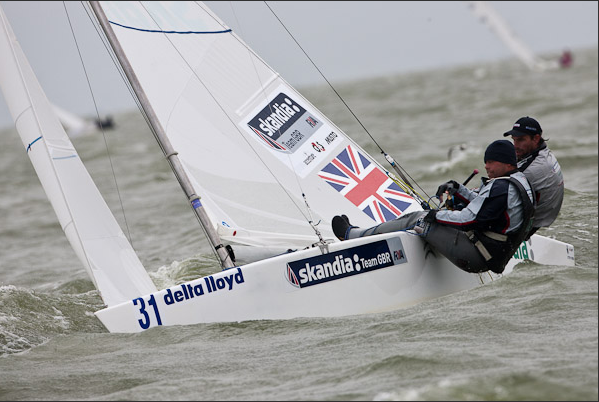
British Olympic Gold Medallists Percy and Simpson are coming to Dublin Bay next month. Photo: Delta Lloyd Regatta /Sander van der Borch
Beijing Gold Medalists, Britain's Ian Percy and Andrew Simpson, are confirmed for the presitgious Olympic class event that starts at the Royal St. George YC on September 2nd.
Ireland's other entry is Olympic triallists Max Treacy and Anthony Shanks from the host club.
The entries for the 2011 Star European Championships are:
| Skipper | Country | Sailing Number |
|---|---|---|
| Chatagny | CH | SUI 8075 |
| Niklaus Michel | CH | SUI 7829 |
| Alexander Schlonski | DE | GER 8426 |
| Maxwell Treacy | IE | IRL 8381 |
| Mateusz Kusznierewicz | PL | POL 8417 |
| DENIS KHASHINA | UA | UKR 8205 |
| Andrew Campbell | US | 8423 |
| Ante Razmilovic | UK | 8191 |
| Johannes Polgar | Germany | 8414 |
| Arthur Anosov | UKR | 8240 |
| Andrey Berezhnoy | Russia | 8359 |
| Barbara Beigel Vosbury | 7986 | |
| Fernando Echavarri | Spain | 8209 |
| Flemming Soerensen | Danish | 8225 |
| George Szabo | US | 8434 |
| Guillaume Florent | France | 8270 |
| Lev Shnyr | Russia | 8047 |
| MARIN LOVROVIC | Croatia | 8339 |
| Pavlo Bondar | UKR | 8119 |
| Tom Londrigan, Jr. | US | 8170 |
| Vasyl Gureyev | UKR | 8247 |
| Xavier ROHART | France | 8237 |
| Mate Arapov | 7287 | Croatia |
| Richard Clarke | 8361 | Canada |
| Stuart Hebb | 8427 | Canada |
| Tom Lofstedt | 8351 | Sweden |
| Diego Negri | 8266 | Italy |
| Peter O'Leary | 8418 | Ireland |
| Tibor Tenke | 8386 | Hungary |
Irish Star Shines Bright in Second Overall
In an impressive show of speed and strength that may yet produce one of the top Irish Olympic campaign performances of all time, Peter O'Leary and David Burrows notched up two more top six results in the Star Class yesterday to be second overall - by a margin of 11 points - at the Weymouth Pre-Olympic regatta.
The Stars, who were abandoned on Wednesday, continued with Race 7 and 8 yesterday. Robert Scheidt and Bruno Prada (BRA) continue to lead on 12 points. The day's race wins went to Britain's Iain Percy and Andrew Simpson in Race 7 and Flavio Marazzi and Enrico de Maria in Race 8.
O'Leary and Burrows have a very solid score line of 6 5 4 4 1 3 2 6 to give them 25 nett points in their 21-boat fleet Third is current Olympic gold medallists Percy and Simpson on 36 points.
The Stars have a further two scheduled races today before tomorrow's medal race.
Only two races were possible in the 49er class After 13 races Iker Martinez and Xabier Hernandez (ESP) lead Australia's Nathan Outteridge and Iain Jensen by a single point. In Race 12 the Australians finished a second ahead of the Spaniards to take the bullet but both teams finished out of the top three in Race 13 as Peter Burling and Blair Tuke (NZL) took the bullet and sit in third place on 48 points trailing the Spaniards by six.
Ireland's Matt McGovern and Ryan Seaton are 14th. Listen to the video interview here.
No racing was possible in the Finn class and they will race today as will the 49er and Star fleets.
The Laser, Laser Radial and Men's and Women's 470 will take place today with the first race scheduled to start at 12:00 local time.
Solid Performance Moves O'Leary and Burrows up to Second
A very sold performance from Cork-Dublin pairing Peter O'Leary and David Burrows has produced second overall at the halfway stage of the Olympic Test event in Weymouth today. The pair are racing in a 21-boat fleet, a fleet size that will be reduced to 16 for the Olympic regatta next year.
World Number 1 Star duo Robert Scheidt and Bruno Prada had, by their standards, a bad day at office finishing second in Race 5 and ninth in Race 6. But with the discard coming into play they discard their ninth place and continue to lead on seven points. O’Leary and Burrows had a good day placing first in Race 5 and third in Race 6, working their way up from 11th at the first mark in race six.
O'Leary/Burrows move to second overall and Poland’s Mateusz Kusznierewicz and Dominik Zycki are third on 19 points. Canada’s Richard Clarke and Tyler Bjorn won Race 6 and with 40 points they sit in ninth place.
The Laser and 470 were on a lay day today.The Star rests tomorrow and it's back to business for second overall Annalise Murphy in the Laser radial and Ger Owens and Scott Flannigan in the 470.
Vidcast - Max Treacy and Anthony Shanks, Star Duo
It's never easy stepping back in to a boat and finding your competitive edge again. It's even harder if it happens to be an Olympic class. On coming ashore after another windy Star race at the Skandia Sail for Gold regatta yesterday, Dun Laoghaire's Max Treacy concedes he 'never really expected to win the Irish Star keelboat trials this time around'. So far the Royal St. George pair have struggled to break in to the top half of the fleet.
Treacy and Peter O'Leary squared up for the right to represent Ireland next July at the Olympic Regatta in Weymouth but after winning the first trial in Holland ten days ago O'Leary has extended his lead this week.
Treacy, who has clocked up 12 years experience in the class and some impressive international results, says exam pressure kept him off the water this year. Together with his crew Anthony Shanks, the pair are now looking forward to the Star European championships on Dublin Bay in September, the 100th anniversary year for the class and the first time the Olympic keelboat has ever raced in Ireland.
Olympic Crews Heading for 'Sail for Gold' Regatta
After last weekend's Sailing World Cup Regatta in Medemblik, Holland the Irish Olympic sailing squad is back on the water in five days time for the next round of the Cup, this time at the 2012 Olympic venue itself and the Skandia 'Sail for Gold' Regatta in Weymouth.
Expectations are high that Ireland can be in the medals in England not least because Ireland qualifed for three medal races last week and last year Peter O'Leary won Gold in the Star class in Weymouth.
Over 1,000 sailors, including a number of World and Olympic champions, will be competing in Weymouth, Great Britain, the venue of the London 2012 Olympic Sailing Competition.
Great Britain's Ben Ainslie, Giles Scott and Ed Wright have dominated the Finn class during the 2010-2011 ISAF Sailing World Cup.
The British trio have been at the top of the podium on every occasion. Ainslie won Sail Melbourne, Trofeo S.A.R. Princess Sofia MAPFRE and the Semaine Olympique Française, Scott won US SAILING's Rolex Miami OCR and Wright won the Delta Lloyd Regatta last week.
But it is Ainslie who leads the Finn Standings on 79 points ahead of Scott, on 71, and Wright on 66. All three will sail in Weymouth alongside some equally impressive sailors in the form of the World #1 Ivan Kljakovic Gaspic (CRO), World #2 Zach Railey and Spain's Rafael Trujillo.
However it is hard to see anyone defeating the Brits who have dominated the class since the inaugural ISAF Sailing World Cup in 2008-2009 which has seen Wright crowned ISAF Sailing World Cup Finn Champion on two occasions.
Mathew Belcher and Malcolm Page (AUS) reclaimed the top spot in the Men's 470 Standings after clinching gold at the Delta Lloyd Regatta. The World #1 Australians have a 17 point lead over Panagiotis Kambouridis and Efstathios Papadopoulos (GRE) in second. World #5 sailors Pierre Leboucher and Vincent Garos (FRA) trail the Australians by 18 points in third.
The top three will all sail in Weymouth but it is a tough ask for anyone to overhaul Belcher and Page who have a strong lead with just two ISAF Sailing World Cup Regattas remaining.
Eight points separate the top five in the Women's 470 ISAF Sailing World Cup Standings.
Despite not sailing in Medemblik, Penny Clark and Katrina Hughes (GBR) retained their lead at the top of the Standings on 54 points. But Delta Lloyd Regatta runners up Ai Kondo and Wakako Tabata (JPN) trail the Brits by three points and will look to make up the ground on the World #3 pair at Skandia Sail for Gold.
Marit Bouwmeester (NED) and Evi Van Acker (BEL) are tied at the top of the Laser Radial Standings on 69 points each. They will renew their rivalry in Weymouth but with the top ten in the Standings all set to compete, and the third place Veronika Fenclova (CZE) within touching distance of the leaders the gold medal is far from a foregone conclusion.
The 2011 Skandia Sail for Gold Regatta will also welcome the top ten in the Laser Standings. The standout performer this year has been Tom Slingsby (AUS) who has been on the podium in the four ISAF Sailing World Cup Regattas he has sailed in. He has a 14 point lead over Javier Hernandez (ESP) in second and a 20 point lead over Nick Thompson (GBR) in third.
In the Paralympic classes the top three in the 2.4mR, SKUD-18 and Sonar ISAF Sailing World Cup Standings will compete.
Racing begins at the 2011 Skandia Sail for Gold on 6 June and will run until 11 June.





























